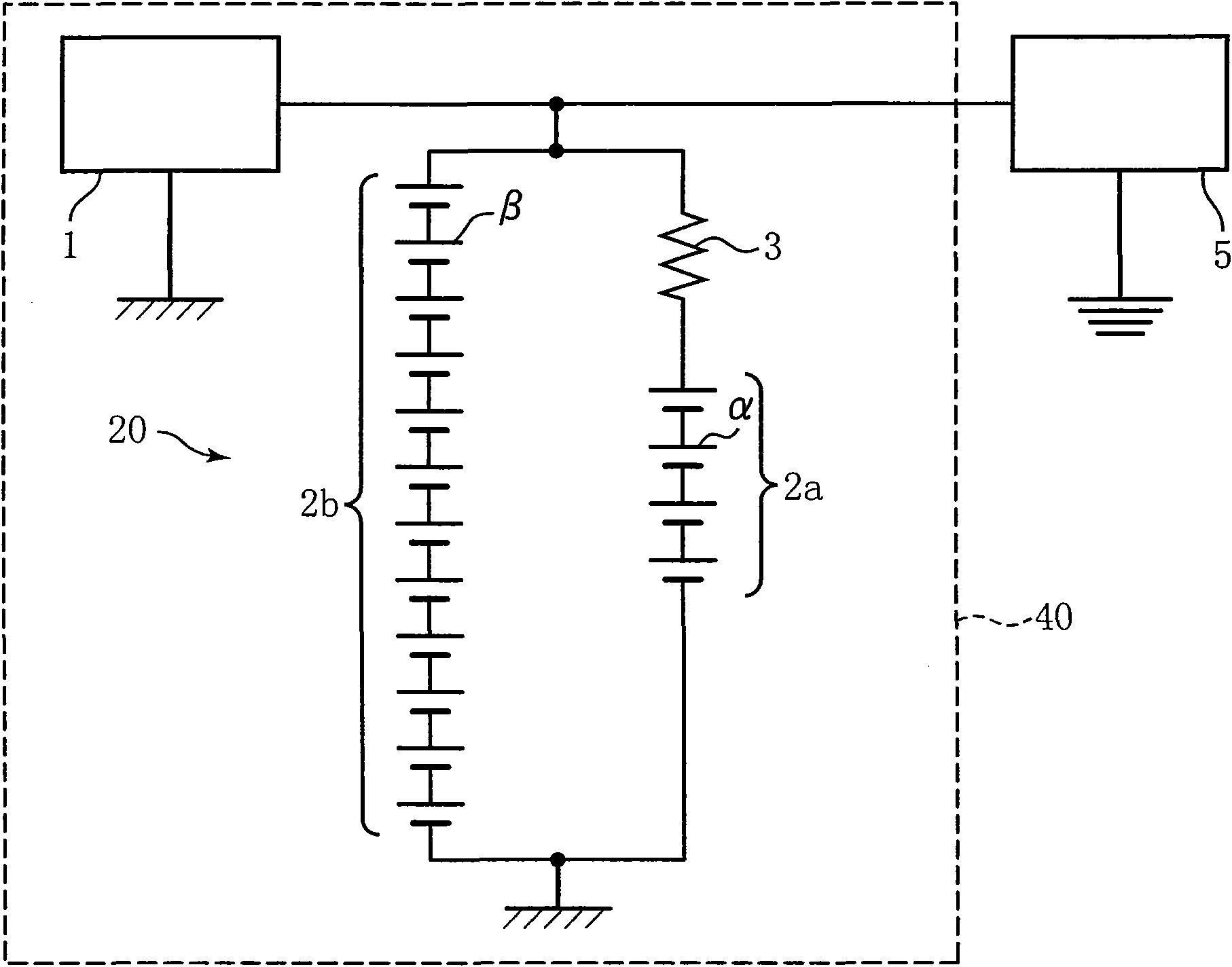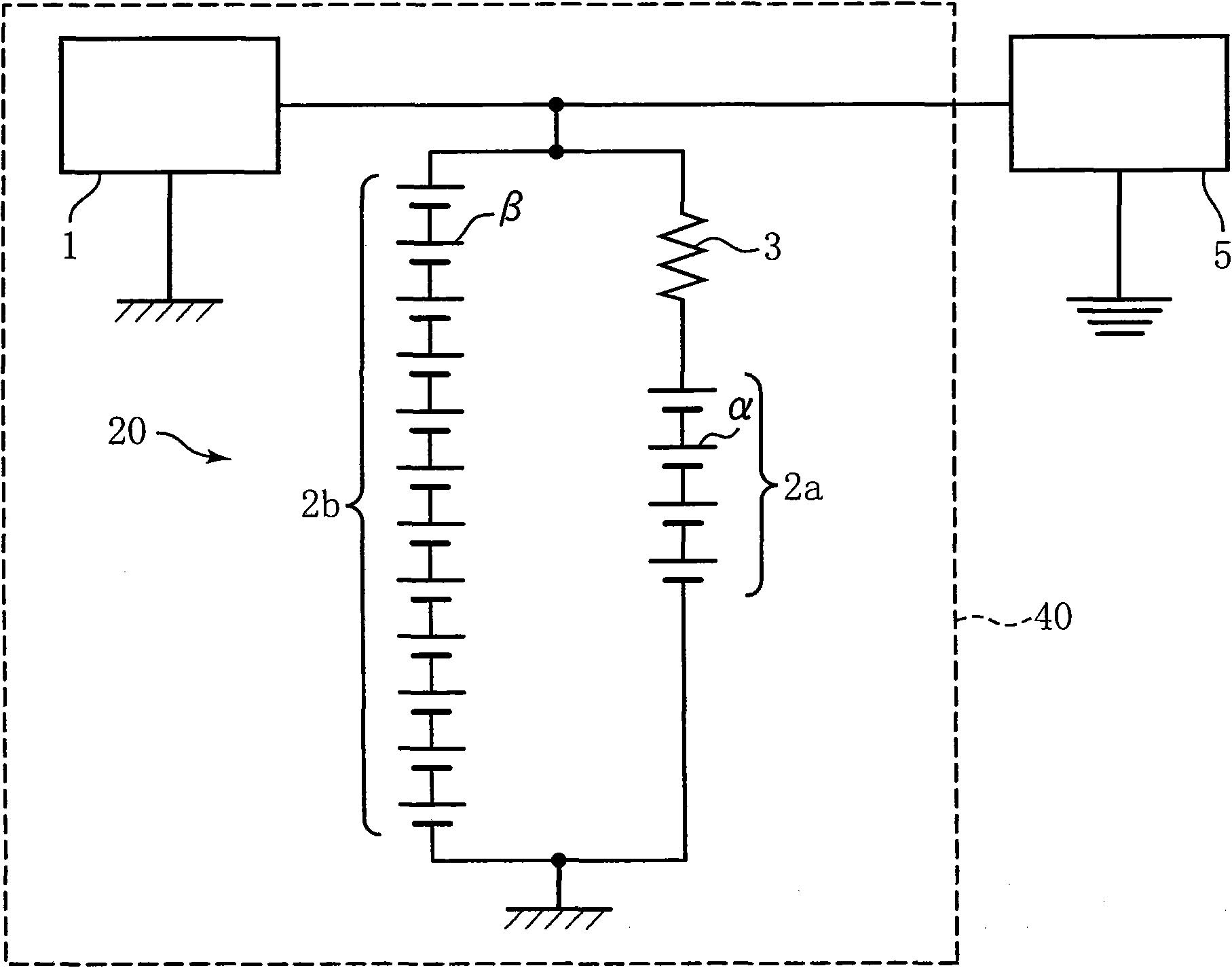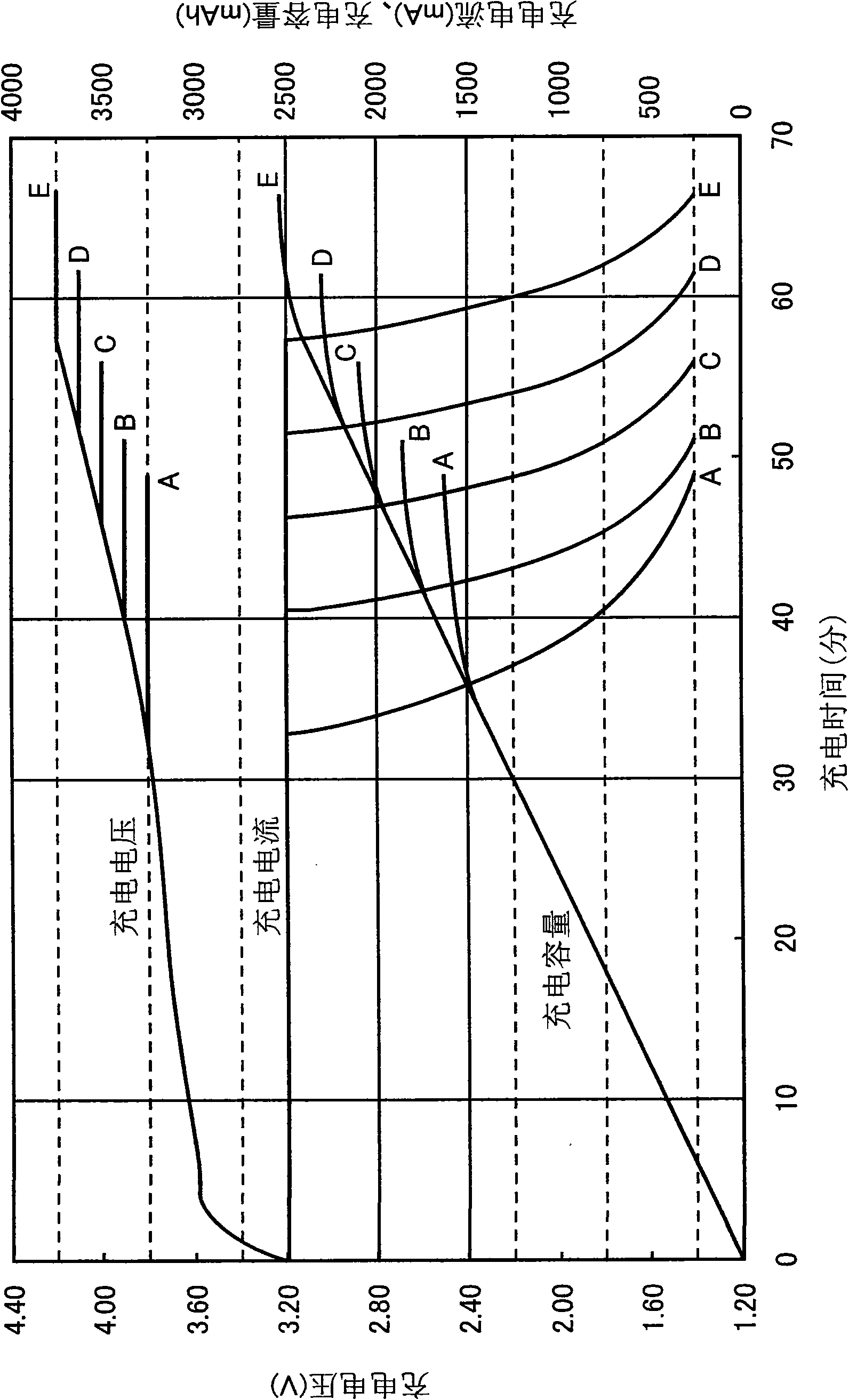Power supply system
A technology of power supply system and battery, applied in the field of power supply system, can solve the problems of inability to eliminate the deformation of unit cells, failure of electric equipment, etc., and achieve the effect of reducing the risk of deformation and high safety.
- Summary
- Abstract
- Description
- Claims
- Application Information
AI Technical Summary
Problems solved by technology
Method used
Image
Examples
Embodiment Construction
[0023] Hereinafter, specific embodiments of the present invention will be described using the drawings.
[0024] FIG. 1 is a block diagram showing the configuration of the power supply system according to this embodiment.
[0025] As shown in FIG. 1, the power supply system 40 includes a generator 1 and a battery assembly 20. The generator 1 is a device for charging the battery assembly 20, and is, for example, a generator of a constant voltage specification that is mounted on a vehicle and generates power by the rotational motion of an engine. The battery assembly 20 includes a first assembled battery 2a connected in series with a plurality of (4 in the structure of FIG. 1) unit cells α (first unit cell) and a plurality of (12 in the structure of FIG. 1) connected in series. ) The second assembled battery 2b of the unit cell β (second unit cell), the first assembled battery 2a and the second assembled battery 2b are connected in parallel. A charging current is supplied from the ...
PUM
 Login to View More
Login to View More Abstract
Description
Claims
Application Information
 Login to View More
Login to View More - R&D
- Intellectual Property
- Life Sciences
- Materials
- Tech Scout
- Unparalleled Data Quality
- Higher Quality Content
- 60% Fewer Hallucinations
Browse by: Latest US Patents, China's latest patents, Technical Efficacy Thesaurus, Application Domain, Technology Topic, Popular Technical Reports.
© 2025 PatSnap. All rights reserved.Legal|Privacy policy|Modern Slavery Act Transparency Statement|Sitemap|About US| Contact US: help@patsnap.com



